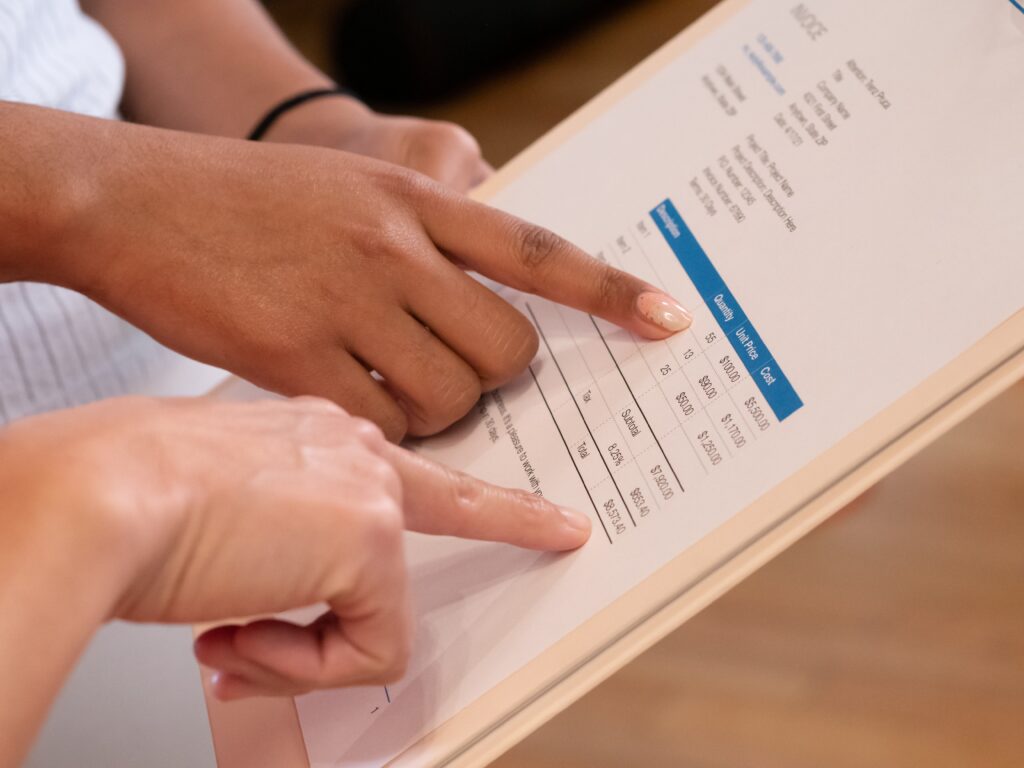Clients will always care about pricing, that’s why having a professional proposal that communicates your services effectively and anchors your pricing is key to establishing a strong first impression.
As a professional services business, you’re no stranger to the occasional client request for cheaper pricing. While it’s natural to want to accommodate your clients and keep them happy, it’s also important to maintain your financial viability and ensure that you’re being fairly compensated for your work. So, what can you say when a client asks for cheaper pricing? Here are a few ideas to consider:

- Know if your market rate is competitive and communicate that effectively. Before you can address a client request for cheaper pricing, it’s important to have a clear understanding of your own market rate. This means knowing what your competitors are charging and how your own pricing compares. If your market rate is competitive, you can confidently communicate this to your clients and explain why your pricing is fair and reasonable. You can also highlight the unique value that you bring to the table, such as specialized expertise or exceptional customer service, which may justify a higher price point.
- Educate the potential client on the complexities of the work and why it costs what it does. Sometimes, clients may not fully understand the complexities of the work that you do and how much time and effort goes into it. By educating them on the details of your process and the value that you bring to the table, you can help them understand why your pricing is justified. This could include explaining the various steps involved in your work, the materials and resources that are required, and the level of expertise and experience that you bring to the table. By giving clients a better understanding of the work that you do and the value that you provide, you can help them see the value in your pricing and be more likely to agree to your terms.
- Help the client evaluate their scope to see if they’re asking for more than they need. If a client is requesting cheaper pricing, it may be because they feel like they’re getting more than they need. By working with them to assess their project scope and identify areas where they can trim down or streamline their requests, you can help them get what they need while still maintaining your pricing structure. For example, if a client is requesting a full website redesign when they really only need a few updates to their current site, you can help them understand the cost difference and potentially adjust their scope to better fit their budget.
- Acknowledge or be upfront with clients if your services are more up-market than what they are looking for. If a client is requesting cheaper pricing, it may be because they are not aware of your typical price point or the level of quality and service that you provide. In this case, it may be helpful to acknowledge that your services are more up-market and explain the value that you bring to the table. If the client still wants to work with you but is unable to afford your full price, you could also consider offering a scaled-down version of your services or suggesting alternative options that may be more suitable for their budget.
- Negotiate or offer discounts if appropriate. In some cases, it may be appropriate to negotiate with a client or offer them a discount on your services. For example, if a client is a long-term or repeat customer, you may be willing to offer them a discounted rate as a way of showing appreciation for their business, especially if your familiarity with the client’s case leads to tailwinds that reduce time, materials, scope, or all of the above. Alternatively, if a client is working with a tight budget but you feel that the project is a good fit for your business, you may be able to find ways to reduce your costs or streamline your processes in order to offer a lower price, especially if a project is a high profile one that lends future material benefits to your business. It’s important to approach negotiations and discounts with a clear understanding of your own financial constraints and goals, and to communicate openly and honestly with your clients about what you can and cannot offer.

One of the benefits to professional services is that you can sometimes be selective with the clients you work with. However, keep in mind that every interaction with a client is an opportunity to elevate your brand and differentiate yourself from the market. By definition, you are the expert in your field, and not the client. Sometimes, the discussion of pricing is an opportunity for you to educate prospective clients on why your services are the right choice for them, despite potential initial misunderstandings about pricing. By maintaining a courteous and educational approach, you may be able to turn a challenging conversation into a positive experience that leads to a successful partnership with your client.
Are you looking for a solution that helps you manage your client proposals? Take a look at Clientary, which can help you deliver professional proposals to clients, as well as help you manage the entire client relationship from estimates and time tracking to invoices and payments.